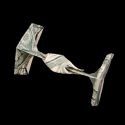History of Letterfolds
Letterfolding has a long but forgotten history. It is often ignored because folding a letter is not as glamorous as folding animals or flowers.
One would imagine that people started folding paper soon after they started writing on paper as a way of communication. Folding a letter will prevent people from seeing the message inside. Even a simple, folded-in-half letter is better than having no fold at all. In addition to the added privacy, a folded letter is more compact and easier to carry and transport. Letterfolding is considered “useful” but not necessarily “fun”.
Sometimes the letter is cleverly folded so it cannot be refolded once it has been unraveled. If a letter arrives unfolded, it will warn the recipient that the letter has been tampered with and probably read. An example of this is the Lover’s Knot; this fold is so complex that it is very difficult (near impossible) to refold once the paper has been opened. Another less difficult example would be the Victorian Puzzle Purse.
Below are 16th century artworks which may shed light on the history of letterfolds in Europe.
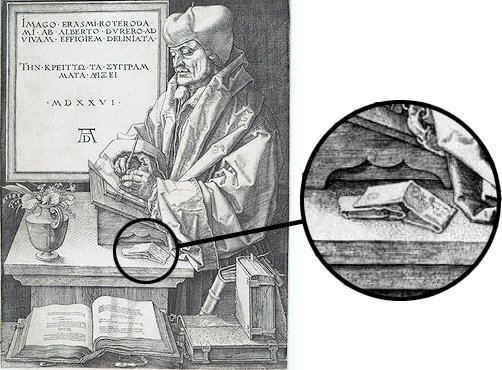
Jose Tomas Buitrago directed our attention to this 1526 engraving by German graphic artist, Albrecht Dürer. The engraving is of Erasmus of Rotterdam writing a letter. On the table are two folded letters. Note how the letters are folded into a narrow strip and then folded into three unequal parts.
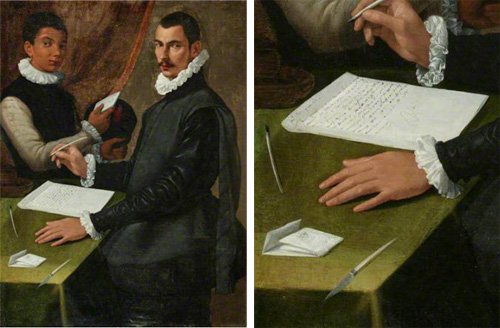
Karen Reeds noticed this 1579 painting by Bartolomeo Passarotti which is titled Domenico Giuliani and His Servant. The painting shows three sheets of paper in various forms of being folded. The servant boy is holding a folded piece of paper, presumably this represents a completed letter ready for delivery. On the table is a partially unfolded letter. Notice how the paper is again folded into a narrow strip and then folded into three unequal parts. The last sheet of paper is the one in which Domenico is writing on. This sheet shows two folds: one along the left edge and another along the top edge of paper. Interestingly, the folds seem to have been made before the letter was written.
Using these images, Saadya Sternberg reverse engineered a method of how Europeans may have folded their letters in the 1500’s. His idea is reproduced below:
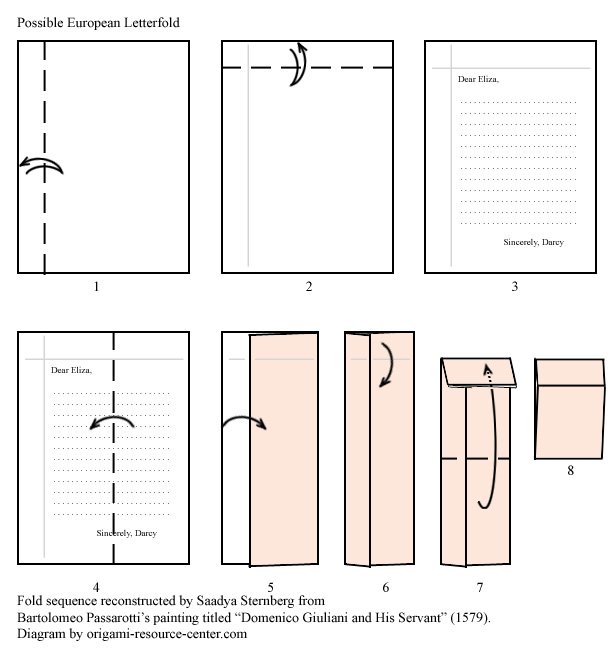
- Fold and unfold the paper along the left edge.
- Fold and unfold the paper along the top edge.
- Write your letter.
- When the ink is dry, fold the right edge towards the left; align it with the crease made in step 1.
- Fold the left edge over the right edge.
- Fold down the top edge.
- Fold up the bottom edge and tuck it inside the top fold. This locks the paper in place so it won’t unravel.
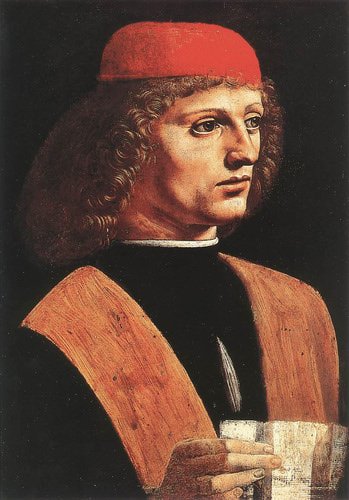
The methodology is clean and the resulting packet is similar in size and proportions as the folded letters in the paintings. It seems almost too good to be true – there must be more to the history of letterfolds than this!
Indeed, Jose Tomas Buitrago mentions a painting by Leonardo da Vinci titled Portrait of a Musician. This painting was made in 1490 and shows a musician holding what seems like a letter with a different crease pattern. However, careful inspection of the paper shows that it is a music sheet and not a written letter of correspondence. Perhaps the folds are different because the music sheet was folded for a different reason.
It is interesting to note that, to this day, if you buy lined paper in a stationary store, the paper will have a left margin and a top margin. Could these be remnants of 16th century letterfolds? Please contact us if you have any insights on the history of letterfolds in Europe.
History of Letterfolds Further Comments
| Comment by Dave Hawk | |
|
Until the Medieval Industrial Revolution and the introduction of water-powered paper-mills that turned rags into cheap paper, it was too expensive to waste on envelopes. A single sheet would be used, sometimes writing first in one direction, then rotating the sheet 90 degrees and continuing, the page would then be folded with the message on the inside (see sample of cross-written letter).
The practice continued in England until the advent of the Penny Post. Letters were carried either by stagecoach or courier and fees were per sheet. To minimize the cost of sending a letter, the letter itself was folded into an envelope. It was more economics than secrecy that created letterfolds! |
|
| Comment by Saadya Sternberg | |
|
I’d like to add to Dave Hawk’s comment as it has a bearing on origami more generally, not just letterfolds. The specific (re)invention of the PRINTING PRESS by Gutenberg circa 1439 meant that by the end of the century printing presses were set up in all the major and many minor cities of Europe. That would have meant that paper, in uniform wights and sizes, would have suddenly started streaming into all sorts of locations–and dropping in price as it became more accessible. Paper would have |
|
– more letterfolds
– Noshi: Japanese ceremonial folds
– tatos and self closing boxes
– free origami instructions
– Home Page
– Site Map
Please Help
Please help by reporting broken links so that we can fix them. One easy message from you can save us hours and hours of clicking. Thanks!
-
More Origami Diagrams and Instructions…
-
These free origami instructions are made available to you by the paper folding community at large. If you have a diagram you would like to share, or if your diagram is listed here and you wish to have it removed, please Contact Us. Diagrams are intended for personal use. Copyright of the models lie with the origami creators and designers. Please contact the designer and/or creator directly for non-private usage of a model and/or artwork.


















